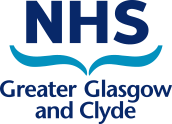2.6. Nitrates, calcium-channel blockers and other antianginal drugs
2.6.1. Nitrates
Prescribing Notes:
The patient should be fully aware of how to use a GTN spray prophylactically before angina-inducing activities. If symptoms persist following three uses of the spray within a 15 minute period, the patient should seek medical help.
Restrictions:
Modified-release preparations are generally much more expensive and are restricted to use only in patients who fail to comply with standard-release tablets
Prescribing Notes:
Isosorbide mononitrate should be prescribed as asymmetric doses of standard-release products (e.g. 20mg at 8am and 20mg at 2pm). Nitrate-free periods (usually at night) are recommended to avoid the development of tolerance.
2.6.2. Calcium-channel blockers
The choice of therapeutic class for the management of hypertension is dependent on individual patient parameters. See the NHSGGC Guidelines for the Management of Hypertension, available on the Clinical Guidelines store on StaffNet. Calcium-channel blockers differ in their possible sites of action; therefore their therapeutic effects are disparate, with much greater variation than those of beta-blockers. There are important differences between verapamil/diltiazem and the dihydropyridine group of nifedipine/amlodipine. Within the dihydropyridine group, the efficacy and side effect profiles are similar, except that amlodipine has a much longer half-life.Prescribing Notes:
Prescribe by brand name. Diltiazem should not be prescribed in conjunction with beta-blockers because of the risk of severe bradycardia.
Restrictions:
Short-acting formulations are not recommended for angina and hypertension.
Prescribing Notes:
Prescribe modified-release preparations by brand name.

Restrictions:
Restricted to specialist initiation only.
Prescribing Notes:
Only licensed for the prevention and treatment of ischaemic neurological deficits following aneurysmal subarachnoid haemorrhage.
2.6.3. Other antianginal drugs

Restrictions:
See prescribing notes below.
Prescribing Notes:
The following formulary restrictions apply:
- Use for the symptomatic treatment of chronic stable angina pectoris in patients with normal sinus rhythm for whom heart rate control is desirable and who have a contra-indication or intolerance for beta-blockers and rate-limiting calcium-channel blockers is restricted to specialist initiation.
- The use in chronic heart failure is restricted to those patients with New York Heart Association (NYHA) class II to IV with systolic dysfunction who are in sinus rhythm and whose heart rate is ≥75 beats per minute (bpm) in combination with standard therapy including beta-blocker therapy or when beta-blocker therapy is contra-indicated or not tolerated. It is restricted to use in patients whose resting heart rate remains ≥75 beats per minute despite optimal standard therapy and should only be initiated by prescribers working within specialist heart failure teams.
2.6.4. Peripheral vasodilators and related drugs

Restrictions:
Use for the treatment of severe hepatic veno-occlusive disease (VOD) also known as sinusoidal obstruction syndrome (SOS) in haematopoietic stem-cell transplantation (HSCT) therapy is restricted to specialist use.
Prescribing Notes:
Treatment should be reassessed after three months and discontinued if of no benefit. There is poor evidence supporting vasodilator treatment and it is important that contributory risk factor treatments (such as antiplatelet and cholesterol-lowering therapies) are considered.

